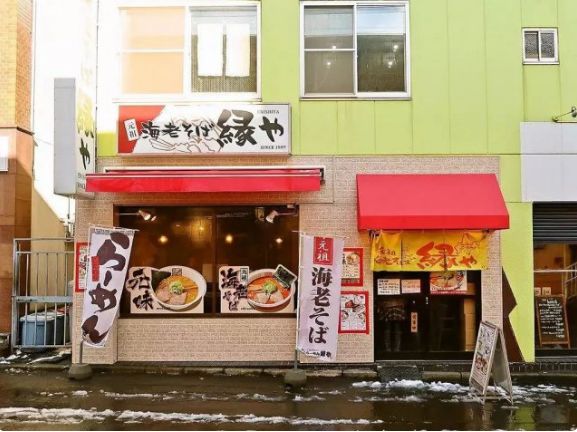
On the streets of Tokyo, there was a time when a steaming bowl of ramen was not only a pleasure for taste buds, but also a comfort for the hearts of countless working people. Today, however, this simple and warm comfort is becoming a luxury, and as the wave of ramen shop closures in Japan spreads, we have to delve into the deep economic concerns behind this bowl of noodles.
In the first three quarters of this year, Japan's catering industry suffered an unprecedented winter, and the closure of ramen shops and barbecue shops has become the most dazzling landscape. The numbers don't lie, the number of ramen shops closing is at a record high, and the situation for kebab shops is even worse, with closures doubling compared to the same period last year. This is not just the rise and fall of a few shops, but a microcosm of the health of Japan's economy.
As we strolled through the once-bustling neighborhood, ramen shops that were once brightly lit were now closed with "out of business" signs. This change from noise to silence is not only a change in the fate of the store, but also an intuitive reflection of the deep-seated problems of the Japanese economy. If the Japanese economy is a car on a complex road, then the restaurant industry is its indispensable engine, and small restaurants such as ramen shops are key components to keep this engine running. Today, the loss of these parts has undoubtedly added some uncertainty to the driving of the whole car.
Rising prices are the last straw for many restaurants. As the yen has weakened, the price of imported ingredients has soared, especially beef, to its highest level in more than three decades. In addition, the cost of side dishes such as vegetable salad has also risen sharply from the same period last year, which is undoubtedly a fatal blow for ramen shops that rely on these ingredients.
The cost structure of a bowl of ramen seems simple, but it is complicated. The cost of flour, soup base, meat, vegetables and other aspects are rising, while the price is difficult to increase significantly due to market competition and consumer acceptance limits. This imbalance between the cost and the price makes the profit space of the ramen shop seriously compressed, and eventually can only go to the abyss of bankruptcy.
In addition to rising prices, the shortage of staff is also one of the important factors leading to the plight of the Japanese restaurant industry. Japan's aging society is serious, and the problem of labor shortage is becoming increasingly prominent, and the catering industry, as a labor-intensive industry, is bearing the brunt.
The inability to recruit means high labor costs. In order to keep their stores open, owners have had to raise wages to attract employees, which has undoubtedly squeezed profits further. At the same time, due to the shortage of manpower, service quality and efficiency are difficult to guarantee, and customer satisfaction decreases, forming a vicious circle.
Under the double pressure of rising prices and manpower shortage, Japanese consumers' wallets have also begun to slim down. According to a survey, Japanese consumers generally consider eating at restaurants to be one of the most extravagant things they can do, besides traveling. This change in consumption concept has directly led to a decline in demand for the catering industry.
Instead of patronizing restaurants, people are choosing their meals more carefully. Economical dining methods such as fast food and convenience store food are gradually favored, while traditional restaurants are facing the dilemma of customer loss. For small restaurants such as ramen shops, this consumption downgrade is undoubtedly worse.
It's worth noting that Japan's restaurant industry is not alone in its woes. Around the world, many countries are facing similar challenges: rising prices, labor shortages, and consumption downgrades are like a global "food storm" sweeping across every corner.
Through cross-cultural comparison, we can find that different countries have adopted different strategies and effects in dealing with these challenges. For example, the U.S. restaurant industry has responded to labor shortages and changes in consumer demand by expanding its delivery business. Some European countries have supported the development of the restaurant industry through government subsidies and tax incentives. These experiences and practices have certain reference significance for the Japanese catering industry.
However, in the in-depth analysis of the reasons for the collapse of Japanese ramen shops, we have to point out the deeper institutional and conceptual problems behind it. First of all, the traditional system of "lifetime employment" and "seniority system" in Japanese society limits the flexibility of the labor market to a certain extent. This system makes it difficult for enterprises to quickly adjust the allocation of human resources in the face of economic fluctuations, thus exacerbating the problem of labor shortage.
Secondly, the consumption concept of Japanese society is also worth rethinking. Japanese consumers have long been accustomed to pursuing high quality, high value-added products and services, but it is difficult to adapt to the change in demand when the economy is depressed. The lag of this consumption concept has hindered the transformation and upgrading of the catering industry and the expansion of market demand to a certain extent.
In addition, the government's policies and measures to deal with the plight of the catering industry are also inadequate. For example, for the problem of rising prices of imported ingredients, the government can reduce the cost pressure of the catering industry by strengthening international trade cooperation and reducing tariffs. In response to the shortage of labor, the government can introduce more flexible and powerful employment policies to attract young people and foreign labor into the catering industry.
Despite the many challenges and difficulties facing the Japanese restaurant industry, we should also see the opportunities and possibilities for transformation.
Firstly, the catering industry can reduce labor costs and improve operational efficiency through the development of automation and intelligent technology. For example, the introduction of intelligent ordering systems, automated cooking equipment and other technological means to optimize service processes and improve customer satisfaction.
Secondly, the catering industry can develop more cost-effective dishes to meet the changing needs of consumers. Reduce the price of dishes and maintain stable quality by optimizing the procurement channels of food materials and reducing production costs; At the same time, it can also attract the attention and love of young consumers and foreign tourists by innovating the taste and form of dishes.
In addition, the catering industry can also explore new business models to expand the market space. For example, the development of new service models such as take-out business and prepared dishes to meet the needs of consumers for convenience and diversity; At the same time, it can also enhance brand influence and market competitiveness through cross-border cooperation and brand promotion.
A simple bowl of ramen hides complex economic and social issues. The wave of ramen store closures in Japan is not only a crisis in the restaurant industry, but also a microcosm of the challenges facing the Japanese economy. It reminds us to pay attention to economic operation and social changes while enjoying food; At the same time, it requires us to keep a clear mind and keen insight in the face of challenges to find new opportunities and transformation. Only in this way can we stand firm in this global "catering storm" and move towards a better future.

Recently, a series of corporate borrower fraud cases have been exposed on Wall Street, implicating institutions such as Jefferies, First Brands, Zions Bank, and Western Union Bank, with massive loan losses triggering market panic.
Recently, a series of corporate borrower fraud cases have b…
According to a report citing the Messenger Post of Papua Ne…
In the latest meeting minutes released by the Bank of Japan…
November 4th witnessed a "day of terror" in the cryptocurre…
On October 26th local time, Tesla's CEO Elon Musk announced…
When the US National Nuclear Security Agency fell into an "…